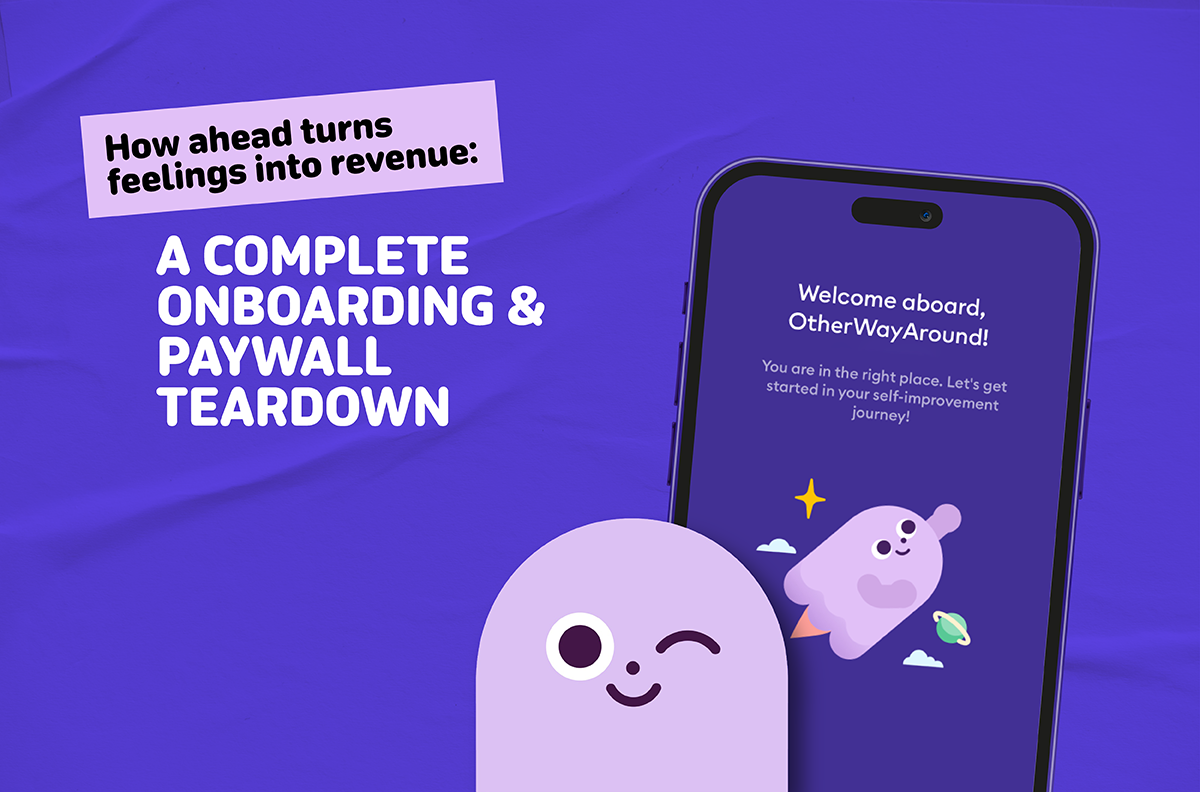Rating & Review Formula 2024: How to Improve App Rating?
All you need to know to start building up your rating and review strategy is compiled together in this comprehensive guide!
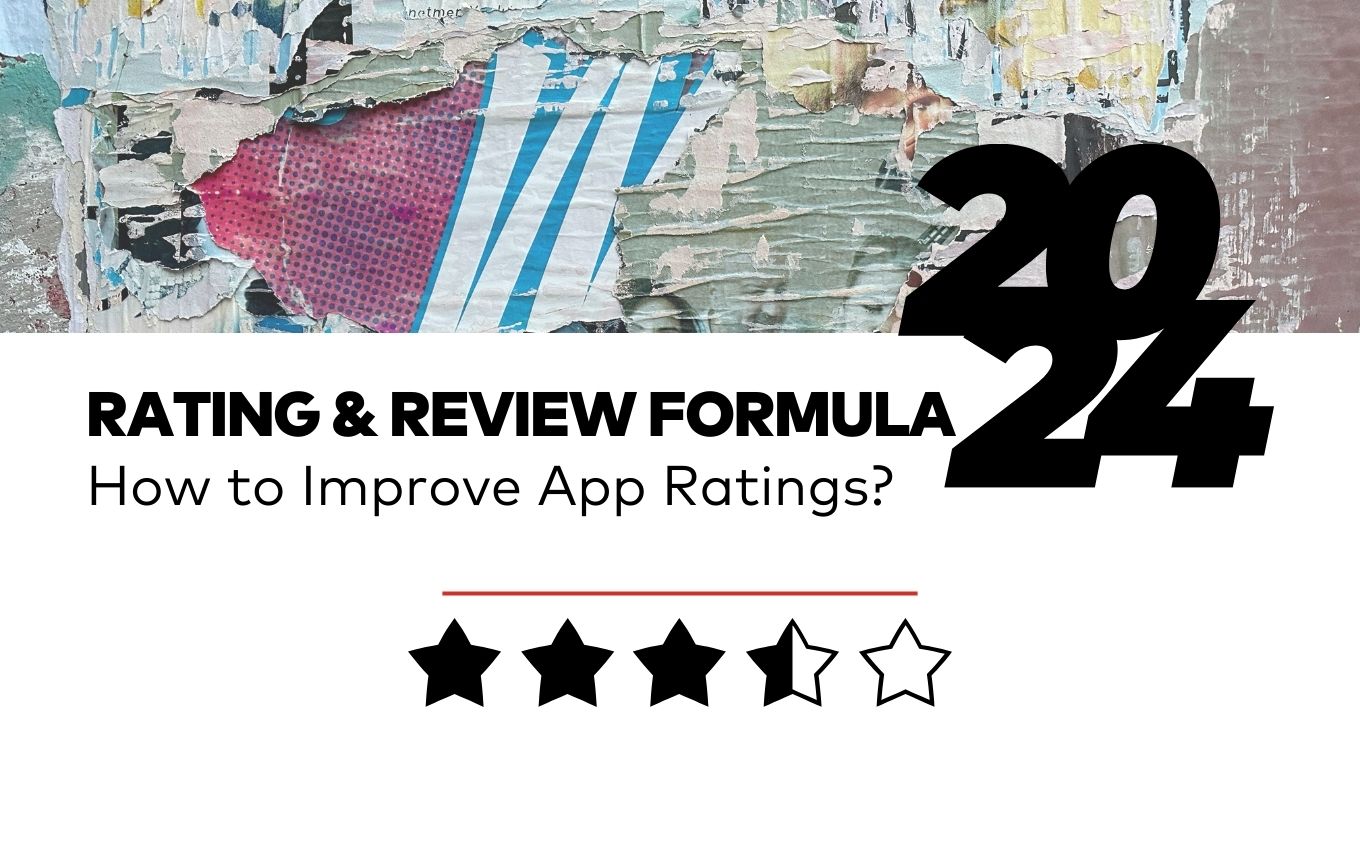
In the ever-evolving landscape of mobile applications, securing a high app rating has become a pivotal factor for success. As we step into 2024, the significance of app ratings and reviews in the Apple App Store and Google Play Store continues to soar, directly influencing user trust, app visibility, and ultimately, download rates. This guide amalgamates the best practices and innovative strategies to elevate your app's rating, merging insights from industry experts and real-world examples.
To improve vocabulary throughout the essay, we shall refer to Ratings & Reviews as "feedback". At least, the majority of user comments in retailers are feedback.
Understanding the Importance of App Ratings and Reviews
Understanding the importance of app ratings and reviews is critical for developers aiming to enhance their app's visibility and user engagement in the competitive landscape of the Apple App Store and Google Play Store. Ratings and reviews serve as a direct reflection of your app's quality and user satisfaction, influencing potential users' decisions to download and engage with your app.
Key Insights on the Importance of Ratings and Reviews
- Influence on Installations: Ratings and reviews significantly influence users' decisions to install an app. High ratings and positive reviews signal to potential users that an app is trustworthy and valued by its user base, directly impacting the number of installations and overall app success.
- User Retention and Revenue Impact: Positive user experiences, as reflected in ratings and reviews, are crucial for retaining users and enhancing app revenue. Apps that offer a great user experience, easy navigation, and a responsive design are more likely to receive favorable reviews, which in turn can boost user retention rates and in-app revenue.
- Visibility and Search Ranking: Good ratings can significantly improve an app's visibility in search results within app stores. Apps with higher ratings are more likely to appear in top search results and recommended sections, making them more accessible to potential new users.
- Conversion Rate: The presence of positive reviews and high ratings can dramatically increase an app's conversion rate. Users are more inclined to download an app when they see that others have had positive experiences with it.
Strategies and Considerations
- App Review Prompts: Integrating review prompts can make it easier for users to leave feedback directly from their phones. This simplifies the review process and can lead to an increase in ratings and reviews.
- Excellent Customer Service: Providing robust customer support and being available to assist users can lead to higher satisfaction rates and, consequently, better reviews.
- Personalization: Offering a personalized user experience can positively impact app feedback. Understanding and implementing current trends and user preferences can make your app stand out and encourage positive reviews.
- Quality Over Quantity: Focus on the quality of updates and features rather than the quantity. Integrating well-researched and user-requested features can enhance user satisfaction and lead to better reviews.
App ratings and reviews not only reflect user satisfaction but also play a pivotal role in an app's discoverability, user retention, and revenue generation. By actively engaging with user feedback, providing excellent customer service, and focusing on continuous improvement, developers can foster a positive app ecosystem that encourages growth and success.
For a deeper dive into strategies for increasing app reviews and understanding their importance, consider exploring resources provided by AppRadar and AppsFlyer, as well as insights from MobileAppDaily and Perficient Blogs which offer comprehensive guides and tips.
Key Differences: Apple App Store vs. Google Play Store
We cannot say that there are big differences between Apple and Google in terms of user behavior. However, there are differences for both app stores regarding the importance of Ratings & Reviews. You can see these differences in this part of the article.
Core Differences
- Keywords and Indexing: Google Play Store utilizes keywords found in user reviews for app ranking, allowing developers to potentially influence their app's visibility by strategically responding to reviews with priority keywords.
- Handling Billing and Downloading Issues: Apple centralizes billing and downloading issues, requiring developers to guide users on contacting Apple for issues like subscription refunds. This centralized approach can influence user satisfaction and the likelihood of positive reviews.
- Highlighted Reviews: The Apple App Store tends to highlight about six reviews on an app's listing page, which can be from any time, whereas Google Play highlights both the most positive and the most critical reviews. This difference underscores the importance of developers actively managing and responding to reviews on both platforms.
- Rating Calculation and Resetting: Google Play places more weight on recent ratings, rewarding apps for ongoing improvements, while Apple calculates an app's average rating over its entire lifetime. Apple also allows developers to reset their app ratings upon releasing a new version, a feature not available on Google Play. Both Google and Apple periodically review ratings & reviews and delete those they consider to be "fake". If you see a decrease in your rating numbers in some periods, this is the main reason.
- Reporting and Analysis: Google Play offers extensive reporting and data breakdowns in the Google Play Console, providing detailed insights into app performance. Apple's reporting through App Store Connect is more limited, prompting many developers to use third-party tools for in-depth analysis.
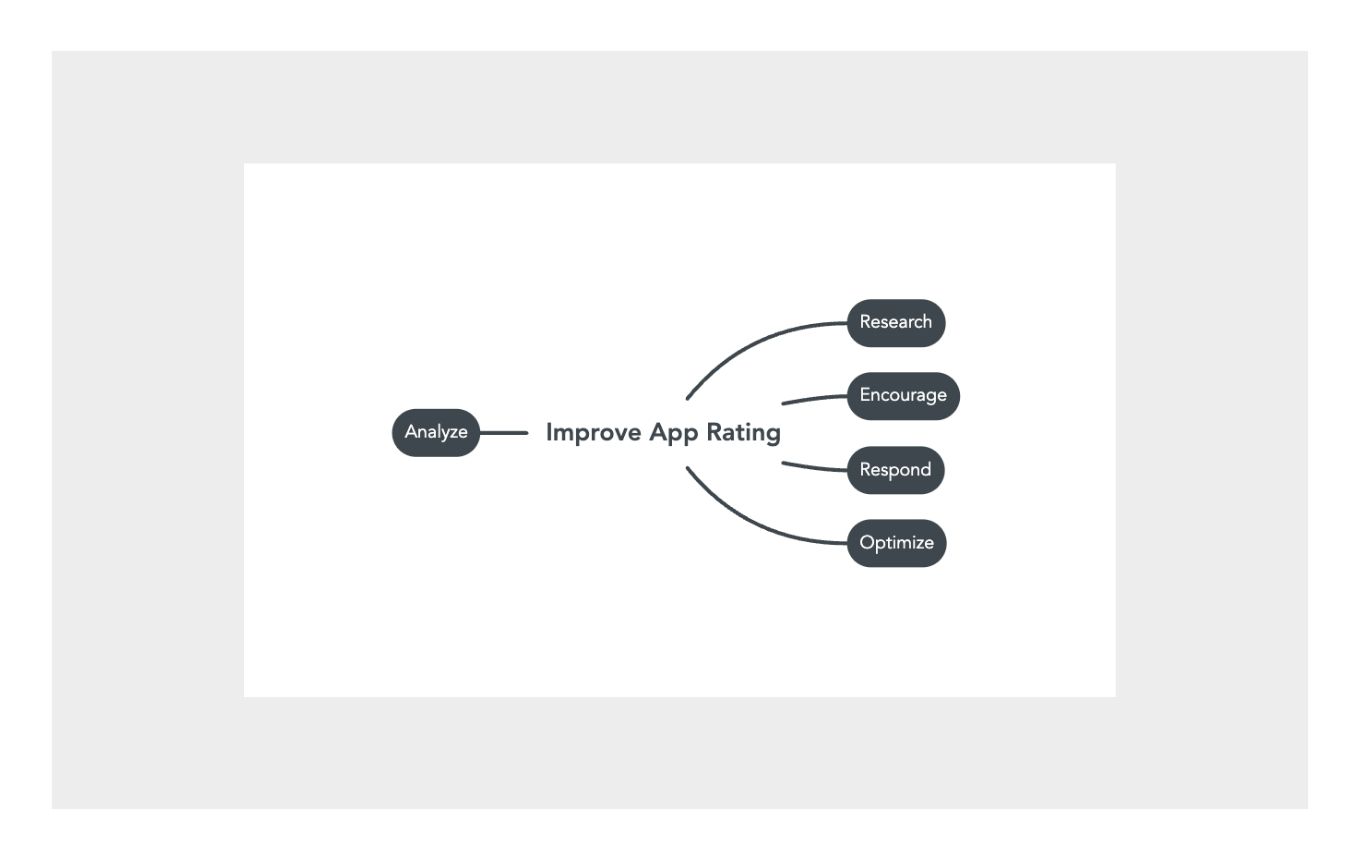
Strategic Implications for Developers
These differences have significant implications for app store optimization (ASO) strategies. For example, the way each platform handles keywords and reviews requires a tailored approach to maximize app visibility and user engagement. Additionally, understanding the nuances of how ratings are calculated and can be influenced is crucial for improving an app's standing in each store.
Furthermore, the platforms' distinct approaches to highlighting reviews and managing billing issues underscore the need for developers to engage proactively with users and manage their app's reputation effectively.
In summary, success in both the Apple App Store and Google Play Store demands not only a great app but also a nuanced understanding of each platform's unique ecosystem and how to navigate it effectively. Developers should consider these differences when planning their ASO and user engagement strategies to enhance their app's visibility, ratings, and reviews across both platforms.
Strategies to Improve Your Mobile App Ratings
Adhering to certain tactics is vital to boost the quantity of ratings. Using default techniques to outperform your competitors is unfathomable. Every app and game should therefore have a unique flow and strategy.
1. User research
Building a communication bridge between you and your users is the first step in developing the app or game. Direct questioning of users is the best course of action when user analysis is not possible. When possible, get input from others. This is a crucial development technique. In order to boost your ratings, you should first conduct user research if you are unfamiliar with how your game or app operates or how your users act.
Leveraging user feedback wisely involves a strategic approach that ensures your mobile app not only meets but exceeds user expectations. A well-structured feedback system is essential for gathering actionable insights that can guide the app improvement process. Here's how you can effectively leverage user feedback:
1.1. Decide your feedback method
Utilize various methods to gather user feedback within your app, such as contact forms, surveys, in-app feedback forms, and shake-to-send feedback mechanisms. These tools allow users to share their thoughts in a straightforward yet effective manner, ensuring you collect valuable data without disrupting the user experience.
1.2. Set your feedback goal
Consider your app's industry and objectives when seeking feedback. Different apps may require different feedback focuses—for example, a financial services app might prioritize feedback on its products and services, while a ride-sharing app like Uber would be more concerned with app functionality and user interface.
1.3. Feedback System
In order to not interfere with the user experience, a good feedback system should be easy to use, quick to complete, and properly presented. To extract useful insights from data and make well-informed judgments on app enhancements, it should also have backend capabilities for data analysis.
1.4. Collect Feedback
After determining the feedback collection method, goal, and form, it is necessary to collect feedback. Instead of receiving random user feedback, feedback can be collected using various tools for specific purposes.
In general, inferences can be made based on the bulk feedback obtained without determining any target or method. Feedback from users is brought together by using review tools in app stores.
Feedback is not a review or direct user comment every time. The data created by users within the app is also referred to as feedback. For this reason, user data should be collected by integrating external tools such as Mixpanel into the app. Churn data or similar details obtained from this data should be considered as feedback. Users' movements within the app should be tracked in detail and detailed data about the users should be obtained.
The main purpose of the feedback stage is to bring these feedbacks together. If only user data will be used, we must make the result we obtain most meaningful by carefully determining the location, method, and purpose of the data we want to collect. In light of the meaningful data obtained, we should reveal the "key moments" of the users and display the rating & review prompt accordingly.
2. Optimize Timing for Rating Requests
Optimizing the timing for rating requests is crucial for capturing positive feedback and improving your app's rating in the Apple App Store and Google Play Store. The strategic timing of these requests can significantly influence users' willingness to leave a positive review. Here's how to optimize this timing based on industry insights and best practices:
2.1. Understanding User Engagement
To ensure requests for ratings are well-received, it's important to understand user engagement patterns within your app. Requesting a rating after a user has experienced a positive interaction or achieved a milestone within the app can lead to more favorable reviews. For example, after completing a level in a game, successfully booking a service, or after a series of app interactions that indicate user satisfaction.
2.2. Leveraging Key Moments
Identifying and leveraging key moments in the user journey is vital. Such moments include:
- Completion of a task: Prompt users after they have completed a task or achieved a goal within the app.
- Positive interaction: After a user has had a positive interaction or a streak of engagements that suggests they are enjoying the app.
- Major updates: After introducing significant updates or new features that enhance the app's value, inviting feedback can also be a good strategy.
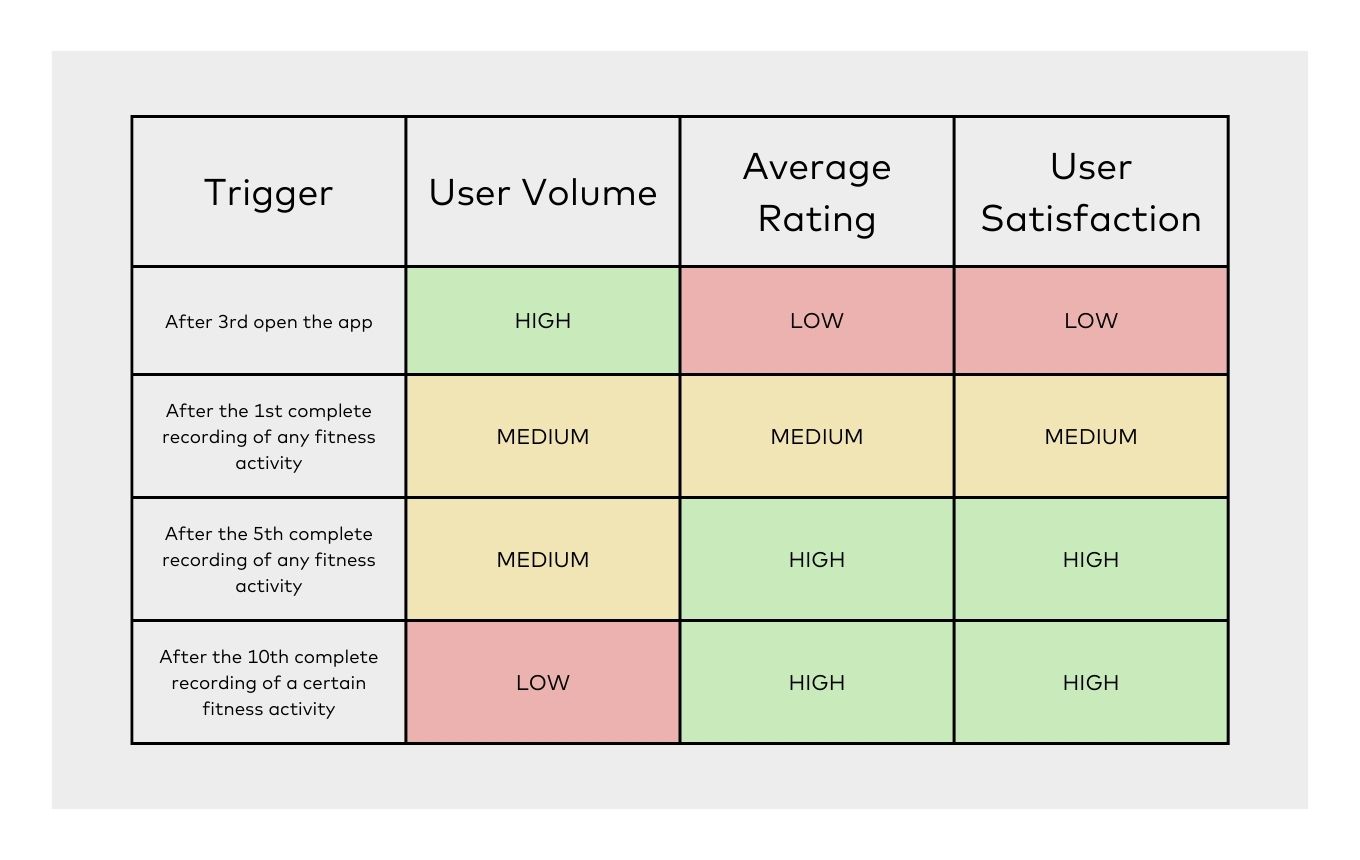
2.3. Avoiding Disruptions
It's important to avoid disrupting the user's experience with untimely rating requests. Intrusive requests can lead to frustration and potentially negative reviews. Instead, integrate the request seamlessly within the app's flow, ensuring it feels like a natural part of the user's interaction rather than an interruption.
2.4. Customizing Requests Based on User Behavior
Customizing the timing and nature of rating requests based on user behavior and feedback can further optimize results. Utilize analytics to understand how different segments of your user base interact with your app and tailor your approach accordingly. For instance, frequent users might be more open to providing feedback compared to new users who are still exploring your app.
2.5. Testing and Optimization
Continuously test and optimize the timing and approach of your rating requests. A/B testing can help determine the most effective strategies for different user segments and app sections. Monitor the impact of different timing strategies on the quantity and quality of reviews received, and adjust your approach based on these insights.
2.6. Following Platform Guidelines
Both Apple and Google provide guidelines and tools for soliciting ratings and reviews within apps. Using these built-in mechanisms can ensure compliance with app store policies and offer a user-friendly way to request feedback. For instance, Apple's SKStoreReviewController allows for in-app rating requests that conform to user experience standards set by Apple.
By optimizing the timing of rating requests and aligning them with positive user experiences, you can significantly improve the likelihood of receiving positive ratings and reviews, thereby enhancing your app's visibility and success in the app stores. Remember, the goal is to make providing feedback as easy and as satisfying as the app itself, reinforcing positive experiences and encouraging users to share their favorable impressions.
3. Engage and Respond to Reviews
Engaging and responding to reviews is an integral part of managing your app’s presence in the Apple App Store and Google Play Store. It not only shows that you value user feedback but also helps improve your app’s rating and reputation. Here’s how to effectively engage with and respond to reviews, drawing on strategies and insights from industry practices:
3.1. Acknowledge Every Review
Make it a point to acknowledge every review your app receives, whether positive or negative. This practice demonstrates to users that their feedback is valued and considered. For positive reviews, a simple thank you suffices, while negative reviews may require a more detailed response, addressing the user's concerns and outlining any steps being taken to address the issue.
3.2. Personalize Your Responses
Avoid generic responses. Personalizing your reply to each review can significantly impact how users perceive your app. Tailor your responses by mentioning specific points the user has raised, and offer a genuine expression of appreciation for their feedback, or empathy for their dissatisfaction. This approach can turn even negative reviews into positive user experiences, as it shows a commitment to customer satisfaction.
3.3. Act Swiftly on Negative Feedback
Quickly responding to negative feedback is crucial. It provides an opportunity to rectify any issues before they affect more users. If a user reports a bug or expresses dissatisfaction, outline the steps you're taking to investigate and resolve the problem. This can often turn a dissatisfied user into a loyal one, as they see their feedback leading to tangible improvements.
3.4. Use Feedback as a Development Tool
Incorporate the feedback received into your app development process. User reviews can offer valuable insights into what users like and dislike about your app, helping you prioritize development efforts. Ensure to communicate back to users when their suggestions have been implemented, showing them their direct impact on the app’s improvement.
3.5. Monitor and Analyze Reviews for Trends
Regularly monitor and analyze your app reviews to identify any trends or recurring issues. This can help you prioritize which areas of your app need improvement. Tools and software are available to help aggregate and analyze feedback from various channels, making it easier to spot these trends and act on them.
3.6. Encourage Positive Reviews
While engaging with existing reviews, it's also beneficial to encourage satisfied users to leave positive feedback. This can be achieved through in-app prompts that are strategically timed to appear after positive experiences, as discussed previously. Positive reviews can help balance out the negative ones and improve your app’s overall rating.
3.7. Be Transparent and Follow Up
Transparency is key when responding to reviews. If you’re working on a fix or update based on user feedback, let them know. Once the issue is resolved or the suggestion is implemented, follow up on your response to inform the user. This not only closes the loop but also encourages more users to share their feedback, knowing that it leads to real changes.
3.8. Results of responding to user comments
By giving correct answers to reviews, users can increase their "stars". Finding solutions to the problems mentioned in the review and making changes based on feedback always yield positive results.
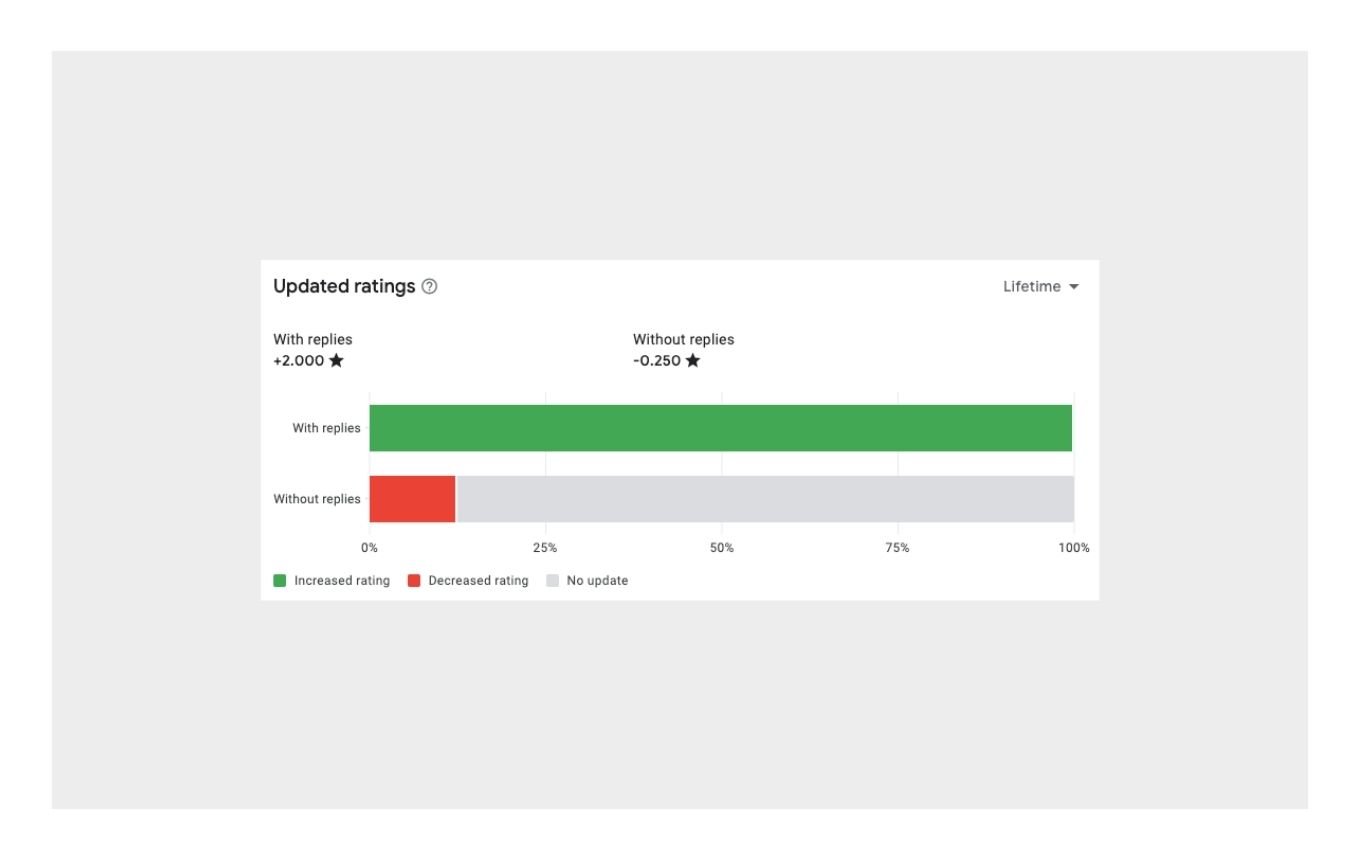
In the Review Analysis section of the Google Play Console, there is data on the number of ratings increased by answers. As you can see in the example above, it is possible to increase your average ratings simply by replying to reviews. Many app and game publishers miss this opportunity.
4. Encourage Reviews and Ratings
Incentivizing ratings and reviews is a strategic approach to encourage users to share their experiences with your app, ultimately helping to improve your app's visibility and credibility in the Apple App Store and Google Play Store. Here’s a detailed exploration of how to effectively implement incentives:

4.1. Understanding User Motivation
Before implementing any incentive, it's essential to understand what motivates your users. Incentives can range from in-app rewards, discounts, or exclusive content, to acknowledgment in the app or community. Tailoring the incentive to fit your user base increases the likelihood of participation.
4.2. Keeping it Ethical
While incentives can be powerful, it’s crucial to keep your strategy ethical:
- Avoid purchasing reviews: Stick to offering incentives for honest feedback, rather than paying for positive reviews, which can lead to trust issues and potentially violate app store policies.
- Make it optional: Ensure participation in the incentive program is optional and doesn't coerce users into leaving only positive feedback.
- Follow App Store guidelines: Both the Apple App Store and Google Play Store have specific guidelines about incentivizing reviews. Familiarize yourself with these guidelines to ensure your strategy complies.
4.3. Communicating the Offer
Communicate your incentive clearly and directly within your app or through other channels like email or social media. Make sure users understand what they need to do to receive the incentive and how it will be delivered. Transparency is key to maintaining trust and ensuring users feel valued.
4.4. Measuring Effectiveness
Track the effectiveness of your incentive program by monitoring the increase in ratings and reviews after implementation. Adjust your strategy based on performance, experimenting with different types of incentives and messaging to find what resonates best with your user base.
4.5. Closing the Loop
Once users have left a review or rating, follow up to deliver on your incentive promise promptly. This not only satisfies users but reinforces positive behavior, potentially leading to word-of-mouth promotion and a stronger community around your app.
5. Focus on App Quality and User Experience
Focusing on app quality and user experience is paramount to ensuring your app not only attracts but retains users over time. High-quality apps with intuitive and enjoyable user experiences are more likely to receive positive ratings and reviews, significantly impacting their success in the Apple App Store and Google Play Store. Here's how to prioritize app quality and user experience:
5.1. Prioritize User-Centric Design
User experience begins with design. A user-centric approach to design ensures that the app not only looks appealing but is also easy and intuitive to use. This involves understanding your target audience, their needs, and how they will interact with your app. Incorporating user feedback early and often throughout the design process can help identify potential issues and areas for improvement before they become problematic.
5.2. Ensure Reliability and Performance
App quality is closely tied to its reliability and performance. Users expect apps to load quickly, function smoothly, and be free of bugs and crashes. Regular testing across different devices and operating systems is crucial to identify and fix any issues. Performance optimization should be an ongoing process, with developers looking for ways to improve load times and reduce battery consumption.
5.3. Continuously Update and Improve
The digital landscape is constantly evolving, and so are user expectations. Regular updates not only allow you to fix bugs but also to add new features and enhancements that users want. Monitoring user feedback, staying abreast of new design trends, and adapting to technological advancements can help keep your app relevant and competitive.
5.4. Invest in Onboarding
A great user experience starts with onboarding. An effective onboarding process educates users about the key features and functionalities of your app, helping them get the most out of it from the start. Simplify the onboarding process as much as possible, avoiding information overload and focusing on the essential actions users need to get started.
5.5. Utilize Analytics for Insights
Analytics can provide valuable insights into how users are interacting with your app, which features are most and least used, and where users may be experiencing friction. Use this data to inform decisions about which areas of the app to improve or further develop. Tailoring the app experience based on user behavior can significantly enhance satisfaction and engagement.
5.6. Focus on Accessibility
Accessibility should be a key consideration in app development. Ensuring your app is accessible to users with disabilities not only expands your potential user base but also demonstrates a commitment to inclusivity. Implementing voice-over text, adjustable text sizes, and high-contrast color options are just a few ways to make your app more accessible.
By focusing on app quality and user experience, you can create an app that not only meets but exceeds user expectations, leading to higher satisfaction, increased loyalty, and ultimately, better ratings and reviews in the app stores. Remember, a focus on quality and user experience is not a one-time effort but an ongoing commitment to excellence and innovation.
Analyzing user actions to increase ratings and reviews for your app involves a strategic approach to understanding user behavior, engagement, and satisfaction. By carefully examining how users interact with your app, you can identify key moments and opportunities to encourage users to leave positive feedback. Here’s how to leverage user analytics to improve ratings and reviews:
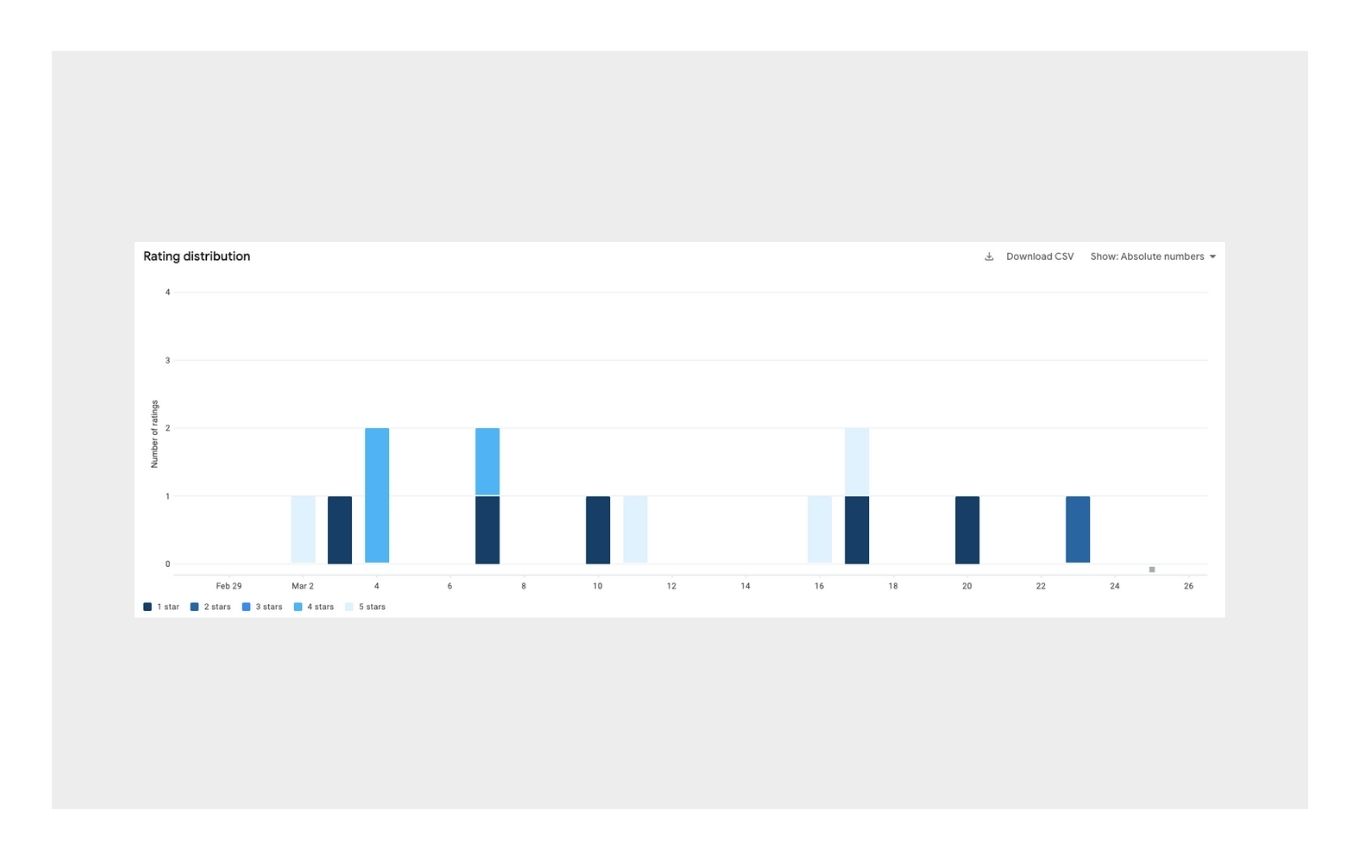
6. How to analyze user data for better rating & review?
Identifying key user behaviors in your app involves analyzing how users interact with your app to understand what drives engagement, satisfaction, and loyalty. This process helps in pinpointing which actions are most valuable or indicative of a positive user experience. Here's a structured approach to identifying these behaviors:
6.1. Define Your App's Core Objectives
Understanding your app’s success criteria is fundamental to analyzing user data effectively for better ratings and reviews. This begins with a clear articulation of your app's core objectives, which serve as the foundation for measuring user satisfaction and engagement. Here’s how to approach defining these objectives:
- Identify Primary Goals: Enumerate the primary goals of your app. This could include metrics such as increasing user engagement, enhancing conversion rates (e.g., purchases, sign-ups), or achieving a certain level of daily active users. Be specific about what success looks like for each goal.
- Understand User Actions: Map out the user actions that directly contribute to achieving these goals. For instance, if a primary goal is to increase in-app purchases, key user actions might include browsing product catalogs, adding items to a shopping cart, and successfully completing a purchase.
- Set Benchmarks: Establish benchmarks for success. This involves setting clear, measurable targets for each identified user action. For example, if your goal is to enhance user engagement, a benchmark might be a specific average session length or a minimum number of sessions per user per week.
- Prioritize Based on Impact: Prioritize your objectives based on their potential impact on user satisfaction and app growth. Consider focusing on the goals that are most likely to improve user experiences, drive positive reviews, and increase ratings.
- Feedback Loop Integration: Consider how user feedback, both direct (through surveys or feedback forms) and indirect (via app usage patterns), will inform and possibly adjust your objectives. This iterative process ensures your goals remain aligned with user expectations and market demands.
- Objective Alignment with Features: Align each app feature with your core objectives. This alignment ensures that every aspect of your app is designed to contribute to your overarching goals, making it easier to measure the effectiveness of individual features and overall user experience.
- Regular Objective Review: Regularly review and update your objectives to reflect new insights, user feedback, and changing market conditions. This adaptive approach allows for continuous improvement and ensures your app remains relevant and valuable to your users.
By clearly defining your app’s core objectives and aligning them with measurable user actions and feedback, you create a structured framework for analyzing user data. This approach enables targeted improvements that directly enhance user satisfaction, leading to better ratings and reviews in the app stores.
6.2. Implement Analytics Tools
Use mobile analytics tools like Google Analytics for Firebase, Mixpanel, or Amplitude. These tools can track a wide range of user actions within your app, such as session duration, frequency of use, completion of specific tasks, and interaction with key features.
6.3. Monitor User Engagement Metrics
Effective analysis of user engagement metrics is crucial for understanding how users interact with your app, which in turn can guide improvements to boost satisfaction and retention. Here's how to approach this with a detailed, actionable strategy:
- Diverse Engagement Indicators: While Daily Active Users (DAU) and Monthly Active Users (MAU) provide a snapshot of app usage frequency, diving deeper into session length and retention rates offers insights into user satisfaction and long-term value. Engage with metrics like the average number of sessions per user, time spent per session, and the churn rate to gain a comprehensive understanding of user engagement.
- Behavioral Segmentation: Segment your users based on their engagement levels to tailor strategies for different groups. For instance, identify power users, at-risk users, and dormant users by their activity patterns. This segmentation enables personalized engagement strategies, such as targeted push notifications or rewards, to re-engage at-risk or dormant users.
- Feature and Content Resonance: Utilize engagement metrics to pinpoint which features or content most resonate with your audience. High engagement rates on specific features or types of content indicate user preferences, guiding you on where to focus development efforts or content creation.
- User Journey Mapping: Track engagement metrics across different stages of the user journey to identify friction points and drop-offs. Understanding how engagement changes from onboarding through to regular usage can highlight opportunities for improving the user experience and increasing overall engagement.
- Retention Rate Analysis: Pay close attention to retention rates as a key indicator of long-term user engagement and satisfaction. Analyze how these rates change in response to updates, new features, or marketing campaigns to understand what drives user loyalty .
- Engagement Benchmarks: Compare your app’s engagement metrics against industry benchmarks to gauge your performance relative to competitors. This comparison can help identify areas for improvement and set realistic goals for your engagement strategies.
- Real-Time Monitoring and Response: Implement tools and processes for real-time monitoring of engagement metrics. This allows for immediate responses to unexpected drops in engagement, enabling rapid troubleshooting or adjustment of features and content.
- Feedback Loop Integration: Use engagement data to inform continuous improvement cycles. Gather user feedback directly related to engagement metrics to understand the reasons behind the numbers, which can guide feature development and content strategy.
By adopting a nuanced approach to monitoring user engagement metrics, you can uncover valuable insights into user behavior, preferences, and pain points. This data-driven understanding enables the creation of a more engaging, satisfying, and valuable app experience for your users, driving higher retention rates and fostering app growth.
6.4. Track Conversion Events
Identify and track conversion events that are critical to your app’s success. These could be in-app purchases, subscription sign-ups, or other actions that contribute to your app’s revenue. Understanding the path users take to these conversions can reveal important behaviors. Tracking conversion events is pivotal for understanding and optimizing the economic engines of your app, such as in-app purchases, subscription sign-ups, and other monetization actions. A strategic approach to conversion tracking not only reveals user behaviors leading to revenue generation but also uncovers opportunities for improvement. Here’s how to refine your strategy:
- Define Conversion Events: Start by identifying all actions within your app that directly or indirectly contribute to revenue. This includes not just the final purchase or subscription event but also leading indicators like adding an item to a cart, completing a tutorial, or engaging with a promotional offer.
- Implement Event Tracking: Utilize analytics tools to set up event tracking for each defined conversion action. Ensure that you capture detailed information about the event, such as the item purchased, the amount spent, and the user's journey to the conversion. Tools like Firebase Analytics and Mixpanel offer robust options for tracking these events in depth.
- User Journey Analysis: Analyze the paths users take leading up to a conversion event. Map out user flows to identify common routes and potential friction points. Understanding these pathways allows you to streamline the user experience, remove obstacles, and potentially increase conversion rates.
- Micro-Conversion Tracking: Recognize and measure micro-conversions, smaller actions that precede the final conversion event. Tracking these smaller actions, like viewing a product description or starting a trial, can provide early indicators of user interest and intent.
- Segmentation and Personalization: Segment users based on their behavior and conversion patterns to tailor the app experience and marketing messages. Personalization can significantly enhance conversion rates by presenting users with offers and content that align with their interests and behaviors.
- A/B Testing: Employ A/B testing to experiment with different aspects of the conversion process, from the placement of call-to-action buttons to the wording of offers. This empirical approach helps identify the most effective strategies for driving conversions.
- Optimize for Conversion: Use insights gained from tracking conversion events to continuously optimize your app. This may involve redesigning the user interface for clarity, simplifying the checkout process, or tweaking the timing and targeting of promotional offers.
By adopting a comprehensive approach to tracking conversion events, you can gain a deeper understanding of what drives user actions that contribute to your app's financial success. This data-driven insight enables you to make informed decisions, enhancing user experiences and ultimately boosting conversion rates and revenue.
6.5. Segment Your Users
Segmenting your user base is a powerful strategy to uncover valuable insights about different groups within your app's audience. By categorizing users based on demographics, such as age, location, and gender, as well as their behavior and how they interact with your app, you can tailor your analysis to understand the unique needs and preferences of each segment.
Demographic information provides a basic structure for segmentation, but diving deeper into behavior and usage patterns reveals the actions that users take within your app and how frequently they engage with it. For example, you might find that users from a certain demographic prefer specific features of your app or that heavy users utilize your app at particular times of the day.
This nuanced understanding allows you to tailor your app’s features, marketing messages, and overall strategy to meet the specific needs of each segment. It helps in identifying which user groups are most engaged or most valuable, based on their activity levels, conversion rates, or revenue generation. These insights can guide where to focus development efforts, which features to promote, and how to adjust user acquisition strategies to attract more users like your best ones.
Moreover, by analyzing these segments, you can also identify underperforming groups, offering a chance to investigate further and implement targeted improvements. This could involve customizing the user experience, offering special promotions, or adjusting the onboarding process to better suit different user needs.
User segmentation is not just about understanding who your users are, but also about leveraging that understanding to make informed decisions that enhance user satisfaction, increase engagement, and drive growth.
6.6. Analyze User Journeys
This process involves examining how different types of users interact with your app from their entry point through to achieving specific actions or reaching goals. To start, it's crucial to recognize that users might have diverse intentions and ways of interacting with your app, which necessitates identifying various user segments.
Each segment may have its unique journey shaped by their needs and how they prefer to navigate the app. By mapping these journeys, developers, and marketers can pinpoint not only the popular features that effectively engage users but also the friction points where users might stumble or exit the app. Identifying these moments allows for targeted improvements, such as simplifying complex processes or enhancing guidance at critical steps.
To carry out this analysis, leveraging analytics tools that provide user flow reports is invaluable. These tools can visually represent the paths taken by users, highlighting both successful navigations that lead to conversions or desired actions and the drop-off points that indicate issues within the user experience.
By focusing on refining these user journeys based on insights gained, app creators can iteratively optimize the user experience. This involves making informed adjustments to the app’s design, navigation, and features, then observing how these changes affect user behavior. The goal is to create a seamless, intuitive path that guides each user segment from their initial engagement toward the successful completion of key actions, thereby improving overall satisfaction and app performance.
6.7. Gather User Feedback
Direct feedback from users can provide insights into their behaviors and preferences. Use in-app surveys, feedback forms, or social media interactions to ask users about their experiences, what features they like most, and what improvements they would like to see.
6.8. Perform Cohort Analysis
Cohort analysis involves grouping users based on shared characteristics or behaviors over specific periods. This can help you understand how different groups of users behave and evolve, shedding light on long-term trends and behaviors.
6.9. Identify Patterns in High-Rated Sessions
Examine sessions or user interactions that coincide with high app ratings or positive reviews. Identifying what these sessions have in common can help pinpoint behaviors or features that lead to high user satisfaction.
6.10. Utilize Heatmaps and Session Recordings
Tools like heatmaps and session recordings can visually show you how users interact with your app. Observing where users tap, swipe, and spend their time can reveal which aspects of your app are most engaging or problematic.
By systematically identifying and analyzing key user behaviors, you can make informed decisions to enhance your app's user experience, streamline the user journey, and ultimately, increase user satisfaction and loyalty.

Use cases examples
Implementing the best practices for app rating and review prompts can significantly impact your app's visibility and user engagement. Here are direct use cases derived from the best practices mentioned earlier, showcasing how to effectively encourage positive ratings and reviews:
- Segmentation for Personalized Requests: An e-commerce app segments users based on their purchase history and frequency of app usage. It sends rating requests to frequent shoppers right after they make a purchase, leveraging their likely positive experience to encourage a review.
- Milestone-Based Rating Prompts: A language learning app triggers a rating prompt after a user completes a significant milestone, such as finishing a level or a particularly challenging lesson. This approach capitalizes on the user's sense of achievement and satisfaction.
- Multichannel Engagement: A fitness app uses a combination of push notifications and in-app messages to request ratings. It analyzes user activity data to determine the best channel and timing for each user, aiming for moments when the user has just achieved a personal best or completed a workout challenge.
- Optimized Timing with Personalization: A productivity app employs send-time optimization to deliver rating requests at the most opportune moment for each user, based on their interaction patterns. It personalizes the message to reflect the user's recent achievements within the app, making the request feel more relevant and engaging.
- Feedback Conversations Instead of Direct Requests: A travel app initiates conversations with users about their recent booking experience, asking for feedback on the booking process. Based on the user's response, the app then gently nudges satisfied users towards leaving a review, while directing less satisfied users to a feedback form.
- Alternative Pathways for Dissatisfied Users: An entertainment streaming app detects when a user has encountered playback issues and offers a direct feedback form instead of a public review prompt. This allows the app to collect valuable feedback while minimizing negative public reviews.
- Concise Messaging in Push Notifications: A news app carefully crafts its push notification messages to be under 100 characters, ensuring the entire message is visible without needing to open the notification. The concise message encourages users to rate the app if they enjoy the content, leading to higher engagement rates.
- Avoiding Disruption During Crucial Activities: An online banking app avoids sending rating requests during financial transactions. Instead, it waits until the transaction is completed and the user has exited the transaction screen, ensuring the request does not disrupt the user's primary task.
- Gamification Rewards After Feedback: A mobile gaming app introduces a gamification element where users earn in-game currency or power-ups every time they leave a review. This method directly ties the act of giving feedback to the in-game reward system, making it a part of the user's gaming experience.
- Post-Resolution Support Feedback: After resolving a support ticket, a customer service app sends a follow-up message asking the user to rate the resolution process. This targets users at a moment when they've experienced positive support outcomes, leading to potentially higher satisfaction ratings.
- Yearly Feedback Milestone: An annual review prompt is sent to users on the anniversary of their app signup date, encouraging them to reflect on their year-long experience with the app. This gives long-term users a unique opportunity to share their extended usage insights.
- Feature Release Feedback Loop: When a new feature is released, a productivity app targets users who have engaged with that feature extensively over the first few weeks. The app requests feedback specifically about the new feature, emphasizing the importance of user input in shaping app development.
- Beta Tester Exclusive Ratings Request: Before a major update goes live, beta testers are prompted to rate their experience and provide feedback. This not only helps in fine-tuning the update but also generates initial positive ratings from a dedicated user base when the update is officially released.
- Social Share Incentive for Reviews: A social media app offers profile customization options or special badges for users who share their positive app reviews on their social media. This not only incentivizes reviews but also leverages user networks for organic promotion.
- Tutorial Completion Prompt: After a user completes an in-app tutorial, they receive a prompt asking how helpful they found the guide. This targets users at a moment of learning and engagement, potentially leading to positive feedback about the app's usability.
- Checkout Success Review Request: E-commerce apps send a rating prompt after a successful checkout process, especially when users have utilized a new payment integration for the first time. This captures user feedback on the checkout experience and payment process.
- Custom Emoji Feedback Scale: An entertainment app uses a custom emoji scale for users to express their feelings about recent app updates. Depending on the emoji selected, users are then directed to leave a detailed review or provide private feedback.
- Interactive Tutorial Feedback: After users complete an interactive tutorial, they're asked to rate their experience with the tutorial itself, focusing on its effectiveness and clarity. This provides specific insights into the educational aspects of the app, allowing for targeted improvements.
Conclusion
Improving your app’s rating in the Apple App Store and Google Play Store requires a multifaceted approach, focusing on user engagement, timely feedback requests, and continuous improvement of the app itself. By implementing these strategies, you can significantly enhance your app’s visibility, attract more users, and foster a loyal user base. Remember, in the competitive world of mobile apps, a high rating can be the difference between obscurity and success.


.png)
